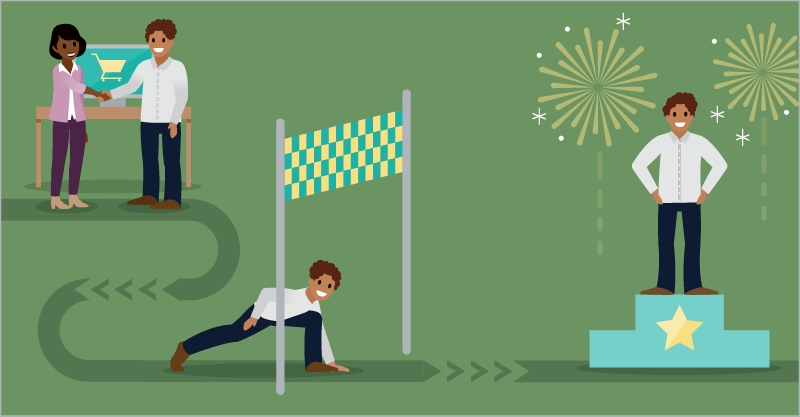Understand the Customer Experience Lifecycle
Learning Objectives
After completing this unit, you’ll be able to:
- Define customer experience.
- Explain why customer experience is important.
- Describe the customer lifecycle.
- Explain how we set customers up for success at each stage of the customer lifecycle.
Customer Experience Starts with the Customer
You strive to put your customers’ successes first. Whether you’re a developer coding the latest innovation, a product marketer organizing the next campaign, or a service rep resolving customer issues, you’re responsible for delivering a world-class experience for your customers.
Who are the customers? They’re people who interact with you, like:
- Prospects, who are also known as potential customers.
- Employees of businesses that buy from you.
- Sales teams, marketers, and call center agents who use your offerings.
- Partners who help sell, integrate, build on, and implement your product or service.
Each time a customer interacts with your company, they form an impression that’s based on their experience with your brand. Customer experience (CX) is the sum of what happens at every interaction and touchpoint. This includes the experiences they have with your website, sales and support teams, products and solutions, partners, and more.

Think of an experience you’ve had as a customer. Did the salesperson quote you a price and then end the conversation? Or did they take the time to understand your needs and find the product that met all of your requirements in the price range you wanted?
That second experience sounds more satisfying and productive, and it probably made you want to shop with that business again. Customers want to know that their needs come first.
Leading with Loyalty
In the Fourth Industrial Revolution, the customer is in charge. To keep up with customer expectations, continual innovation is required to meet their evolving needs. When you meet—and ideally exceed—their expectations, you earn the customers’ loyalty. And the key driver of loyalty? You guessed it—customer experience.
Here’s what industry leaders say:
- 73 percent say that customer experience is a factor in their buying decision.
- 86 percent say that they’re willing to pay more for better customer experience.
Market research firms show that companies with great customer experience:
- See a 42 percent improvement on retention.
- Grow 5 times faster.
This research underlines that to excel in customer experience results in satisfaction for your customers and business.
Next, see what the customer experience looks like throughout the customer lifecycle.
The Customer Lifecycle
The customer lifecycle is the stages customers go through as they build a relationship with your business, from their first interaction with your website through implementation and beyond. The lifecycle is organized into three stages: Buy, get started, and grow.

Use the customer lifecycle to not only better understand your relationship to your customers but also as a framework to focus on their business requirements, provide great interactions, and monitor and measure their experiences.
Defining your customer’s lifecycle by their business needs shows that you’re committed to their long-term success.
Wondering what this looks like in real life? Here’s a quick breakdown.
| When the customer says: | They’re in this stage: | Here’s what to do: |
|---|---|---|
|
Buy: from first interaction to purchased solution |
|
|
Get started: from purchased solution to successful use |
|
|
Grow: from successful use to trusted relationship |
|